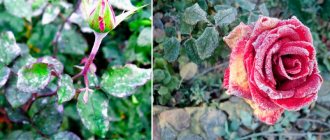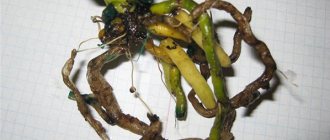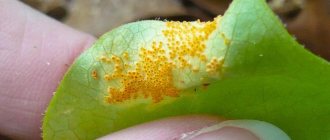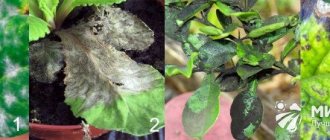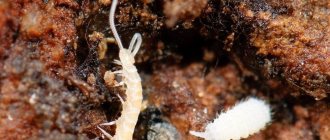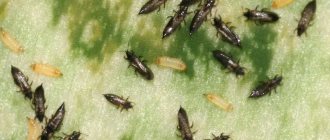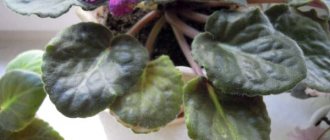Powdery mildew is a rapidly spreading fungal plant disease. Initially, a white powdery coating appears on the leaves, similar to flour or powder. It can be easily wiped off with your finger and even mistaken for ordinary dust. But it was not there! Before you know it, this infection will appear again, and in greater numbers, capturing ever new areas of habitat. Not only the leaves become white, but also the stems and flower stalks. Gradually, old leaves turn yellow and lose turgor. New ones grow ugly and twisted. If measures are not taken to cure powdery mildew, the plant will die.
What is powdery mildew
All gardeners are familiar with diseases of garden plants, shrubs and indoor flowers. Many people fight them every year, while others manage to defeat the pests within a few weeks. Unfortunately, garden owners often encounter a plant infestation called downy mildew (also known as aspergillus, liverwort, or downy mildew).
It affects garden trees and shrubs, vegetable plants (zucchini, squash, cucumbers, tomatoes, onions, pumpkins), as well as many flowers, even domestic ones (oidiums, phlox). Three ways to protect against this disease at home have been invented: using folk remedies, biofungicides and fungicides. Read on to learn how to use each method to avoid infection.
Downy mildew is a rapidly spreading disease that is caused by the activity of various types of microscopic fungi. A white coating resembling flour or mold (mycelium) appears on the leaves of infected plants, followed by droplets of liquid.
Spots of mycelium can be found on young shoots and leaf blades, berries and stems. The fungus first attacks greenery that is close to the soil and then moves on. Affected crops crack and rot. If you do not notice the onset of infection in time and start a war with the parasite, you may be left without tasty vegetables, berries and indoor flowers.
Prevention and protection
Preventing a disease is easier than fighting it. Simple tips will help you avoid misfortune:
- It is not recommended to collect soil for indoor flowers from a summer cottage where powdery mildew infection has been noticed at least once.
- When applying fertilizers, take care of their complex composition so as not to cause excess nitrogen in the soil.
- They fight against aphids, spider mites and scale insects, which weaken the immunity of plants.
- The room or greenhouse must be ventilated and do not allow moisture to stagnate.
When treating home flowers, bathe the plant completely in a container with a medicinal solution, spray containers and trays, and the walls of the pots. To prevent powdery mildew, use biofungicides. The fight against the parasite begins with folk remedies; if they fail, chemicals are used.
How to recognize and what provokes it?
If you notice a gray-white coating that can be mistaken for dust and can be easily removed with a finger, but which reappears after a few days and covers even more surface area, you are dealing with downy mildew. Upon very careful examination, you will notice that ulcers have formed on the affected area. The stem and shoots of the flower will soon turn white, acquire a yellow tint and lose elasticity. The new ones become ugly and curled.
What causes this? The white coating, which resembles flour or mold, is a fungus that feeds on nutrients in the host's body. Its spores are dark brown balls.
The causative agents are different types of imperfect fungi, such as:
- Walrus sphaerotheca attacks gooseberry. Bacteria attack not only leaves, but also berries. The sphaerotheca walrus quickly moves from one bush to another.
- Sphaerotheca fuliginea - pumpkin. The yield of this crop is reduced by 50 percent. The quality of pumpkin and zucchini is also deteriorating.
- Threat to cereals - Erysiphe graminis.
- Sphaerotheca pannosa - roses. The bush loses its decorative appearance. Leaves and buds stop growing. Wormwood can cause the death of a plant.
If the infection is not controlled, the shoots can become completely infected and even die.
Downy mildew appears in early summer. When spores are released from the overwintered fungus, infection begins. Spores can live in the soil for a long time and begin to reproduce under favorable weather conditions.
What the affected plants look like (photo)
This disease is easily recognizable due to the white or light gray coating on the surface, which serves as a kind of calling card.
Over time, the entire crop, especially the leaves, becomes covered with plaque; for this reason, the process of photosynthesis is weakened, the parasitic fungus robs the plant of nutrition, and as a result, the affected specimens look depressed.
Powdery mildew on roses, which are quite susceptible to the disease, literally disfigures the leaf blades of the bushes, they lose their shape and fall off prematurely, and when the buds are heavily infected, they bend and freeze without blooming.
Petunia, as if sprinkled with flour, becomes covered with small dark sores within a few days, the leaves quickly turn yellow and die. The resulting young leaves grow crooked and defective (photo). In a short time, powdery mildew on petunias spreads to the entire plant, as a result of which the flower may even die without treatment.
Powdery mildew on petunia
Causes
There are many factors contributing to the appearance of European cornflower:
- Cool weather (+ 15-25 degrees), high air humidity 60-80%, rainy season. Weather conditions have the greatest impact on seedlings grown in open ground and on the balcony.
- The soil is saturated with nitrogen.
- The seedlings are planted too densely.
- The humidity regime is disturbed. Excessive or infrequent watering is a sure sign of decreased seedling resistance and the appearance of powdery mildew.
To avoid infection, it is necessary to correct the above-mentioned care and cultivation mistakes.
Plants at risk
Powdery mildew actively develops on decorative flowers with delicate foliage. The mycelium grows on plants of various groups and varieties.
Owners should pay special attention to preventive measures:
- hydrangeas;
- Jameson's gerberas;
- primrose;
- balsam;
- perennial potted chrysanthemums;
- Saintpaulias (house violets);
- Kalanchoe;
- clerodendrum Thompson;
- campanula;
- begonias of various varieties;
- lemon tree (dwarf variety).
How is powdery mildew spread?
Bacteria are transmitted in two main ways:
- Asexually. In this way, reproduction is carried out using conidia. It is thanks to the immobile spores, named after the Greek species of horse - dust and eidos, that they can be seen on the affected areas, which look like a whitish coating. They fall apart easily, and the wind carries them over long distances. Thus, throughout the summer, the following shoots become infected.
- Sexual reproduction using cleistothecia. This is the name given to the fruiting body of the fungus, which is made up of hyphae and contains millions of spores, each containing up to 8 ascopores. Cleistothecia calmly survive the winter on fallen plant debris, waiting for spring and suitable conditions for reproduction.
At a spring temperature of +15 degrees, only 5 days pass from the moment of infection to the formation of conidia.
In hot and dry weather, with sudden changes in humidity and temperature, the tension of cell membranes decreases. This promotes the development of the parasite, which penetrates and penetrates the membrane cells.
Reduced yield by up to 50%. Cucumbers grown in greenhouses with drafts and poor lighting are most susceptible to the disease. The first outbreaks of the disease appear near windows and doors. The disease can kill not only entire shoots, but also all planted seedlings.
Cleaning plant leaves
To prevent powdery mildew, you need to clean the leaves of healthy plants growing in good conditions. It is important to keep them clean. Dust and dirt lead to clogging of the stomata in the leaves, through which gas exchange occurs. Small plants can be cleaned by regularly misting their leaves with water at room temperature. I recommend wiping the large leaves of most plants with a damp cloth or sponge. During this procedure, you need to support the sheet with your palm from below so as not to damage it. Do not spray the leaves of cacti and other succulents with water - clean them with a soft brush.
Regular care will protect plants from infection.
Methods to combat the disease
Start your pest control in a timely manner, otherwise you risk seeing more infected seedlings. Since the fungus overwinters on plant waste, first of all it is necessary to get rid of plant waste and burn it on a fire, and buy seeds only from resistant and poorly defoliated varieties.
During the period of bud setting, seedlings should not be overfed with nitrogen fertilizers. However, fertilizing with potassium and phosphorus will reduce the risk of ash disease.
On gooseberries and currants, the disease is noticeable as the shoots become crooked, stunted, ugly, and then dry out. In the case of gooseberries, blueberries are also affected. Initially, white spots appear on them, which darken over time. The fruits stop growing, shrink and sometimes fall off. To remove the fungus, cut off the affected shoot tips.
Fertilizers with organic and phosphorus fertilizers are effective. During the flowering period and after harvesting, diseased plants are treated with fungicides. It is also useful to water the bushes in the spring with copper sulfate (10 grams per 10-liter bucket) and 1% Bordeaux mixture, and after flowering with soda ash (2 applications every 10 days).
When apple trees are infected, leaves and young shoots are damaged. They also become stunted, twisted and fall over. Old, unpruned trees are most often affected. Ashworm attacks the above-ground organs of raspberries, strawberries and rose hips. The leaves curl to expose the underside and turn brown over time. The berries may also acquire a faint odor and have a specific mushroom smell.
To protect tomatoes from infections, seedlings are treated with sodium humate. Completely prevents mushroom germination. To protect against pests, it is good to use a 1% Baktofit solution. At the first signs of damage, spray three times at intervals of 7-10 days. Fungicidal treatments are also available. For better adhesion of the preparations to the leaves and shoots, add a little laundry soap or silicate glue to the sprayer.
In early spring, prophylactic use of a nitrophen solution is recommended for zucchini. If a white coating appears, cut off and burn the diseased parts and dig up the soil around the bush. Carry out the procedure three times over 7-10 days. Strawberries can be saved by not allowing them to grow too thick, and by thinning and replanting them in a timely manner. When spraying, you need to ensure that the product reaches not only the surface, but also the entire bush from all sides.
Treatment of flowers
Take preventive measures to prevent infection of indoor and outdoor flowering plants:
- regularly monitor plantings;
- follow planting recommendations (choose the correct distance between bushes, choose a well-lit place, plant in a place protected from drafts);
- timely removal of weeds;
- avoid nitrogen fertilizers, choose organic fertilizers;
- for preventive purposes, sprinkle with special preparations;
- in the fall, remove dried plant remains, bury the root zone deeply;
- choose varieties that are resistant to ash blight.
Fungicides are used to control white spots on houseplants. Sprinkle this product on both the soil and the walls of the pot. If the flower is heavily infected, remove the top layer of the substrate affected by the mycelium and replace it with fresh, disinfected soil. The most effective way is to pour medicinal liquid into the pool and dip the greens into it, watering the soil generously.
Some tips for preventing downy mildew:
- Watering is allowed provided that all layers of the substrate are completely dry;
- Alternative crops;
- Plant varieties resistant to fungi;
- Fertilization with potash-phosphorus fertilizer increases resistance to spores;
- Spring pruning of bushes and trees;
- After the leaves have fallen, apply a preventative fungicide.
How to fight at home?
The fight against the disease should be started immediately. At the first stage, home methods are quite effective:
- it is necessary to thin out dense plantings and remove weak shoots;
- cut off and destroy affected shoots;
- completely eliminate nitrogen fertilization;
- improve lighting as much as possible;
- it is necessary to eliminate waterlogging and avoid stagnation of droplets on the leaves.
It would be useful to regularly ventilate the room. Fresh air significantly weakens the mycelium.
Important! If a disease is detected, the top part of the soil, if not all of the soil, should be replaced. Having destroyed the signs of mycelium on the plant itself, you should do the same with the mycelium, otherwise it will become active again.
The infected plant needs to be quarantined by moving the pot with it to a separate place. Otherwise, harmful spores can easily spread to neighboring crops.
How to use fungicides and biofungicides?
Timely and correct use of poisonous agents against ash burns is effective. Chemicals are available in specialized stores and their prices are quite low. Sprayers are used for convenience. When working, it is recommended to take precautions: carry out the procedure in a respirator and gloves.
The most commonly used fungicides are:
- Copper sulfate. Only one treatment per season is possible - in early spring. To prepare the mixture, 50 g of the substance is diluted in 10 liters of water. To prepare the most effective product, add 35 g of copper sulfate to 500 ml of boiling water, and separately mix 150-200 g of soap shavings in 10 liters. Then slowly and carefully pour the resulting liquid into the soap base, stirring constantly. .
- Tiovid Jet. Purchased for the treatment of pears, apples, cucumbers, grapes.
- Fondazol. Unfortunately, it is not sold in small packages, available in bags ranging from 5 to 20 kg. It is recommended to dig up the soil, especially if violets are infected.
- Topaz. Produced for the prevention and control of powdery mildew.
- Colloidal sulfur. Suitable for use in a variety of crops, shrubs and trees. The special difference between this fungicide and others is that it can be sprayed 3 days before harvest. However, it is not recommended to spray gooseberries with sulfur. Be careful on watermelons, zucchini, melons, cucumbers and pumpkins, because these plants do not tolerate sulfur well. Spray strictly at + 27-32 degrees, otherwise it will not work.
- Also popular are Zato, Forecast, Topsin-M, Tilt and Quadris.
Biofungicides contain live bacteria that can prevent the development of infections that accumulate on plants.
Biofungicides are environmentally friendly, so they can be used even during the ripening of crops. They are less effective than chemical drugs because they do not last long. They need to be used again and again. The most commonly used are phytosporin, pseudobacterin-2 and Alirin-B.
Chemicals and insecticides
These remedies are used when the disease has gone too far:
- Topaz - indoor crops are sprayed at the rate of: 1 ampoule of the drug per 5 liters of water;
- Tilt CE - available in the form of an emulsion, which is dissolved in water before spraying;
- Fundazol - diluted in the proportion of 5 g of product per 5 liters of water;
- Bayleton - dissolves in the same proportion as the previous fungicide.
Most chemicals are recommended to be used twice to consolidate the effect. When repeated use, the solution can be made less concentrated.
Important! When processing, be sure to wear protective equipment in the form of masks, gloves and special glasses. If the product gets on your skin, rinse it with plenty of water. Although it is better to exclude this possibility altogether by covering yourself with long sleeves.
Pets must be removed from the premises during the procedure. After this, the room should be thoroughly ventilated.
Fighting powdery mildew with folk remedies
Ready-made decoctions and infusions from ingredients that are found in almost every home not only help well, but are also completely non-toxic. In the initial stages of downy mildew, it is recommended to try to treat the crops with safe methods and preparations.
How to properly deal with laundry on cucumbers and tomatoes
Before spraying, remove diseased parts of the bush and burn plant debris. A good effect can be achieved by sprinkling cucumber plants with sulfur powder (25-30 g per 10 square meters) or colloidal sulfur (25-30 g diluted in a bucket of water). Watering cucumbers with cow dung is also beneficial.
To prevent plant disease, soak the seedlings in a solution of Epin or Immunocytophyte for 42 hours. When planting seedlings in a greenhouse, you need to ensure that the soil remains moist and is not exposed to drafts or sudden temperature changes. Open and close windows and doors promptly and follow a watering schedule. Already affected tomatoes can be sprayed with 10% whey, ash solution or turned over.
Treatment of zucchini, eggplant and berry crops
Folk decoctions should be used every other day. It is better to treat yourself in the evening, on waterless days, with water with the addition of soda ash or peas, as well as ash (water with ash).
Sulfur powder, emulsion with soda, calcined water, whey, even kefir or yogurt, a weak solution of manganese, a decoction of horsetail, tansa, an infusion of stale hay, and onion peels are well suited for processing currants. We must not forget about every autumn-spring pruning.
Saving apple and cherry trees
The most effective method would be to treat trees with soda ash and laundry soap (for better adhesion of the product) or colloidal sulfur every 3-4 days (more often in rainy weather) until complete recovery.
Folk recipes for combating downy mildew:
- A solution of soap and soda is a fairly common stick, since every gardener has the ingredients. To prepare it, take 10 liters of plain water, add and dilute 50 g of baking soda or soda ash and 20 g of grated soap (it’s easier to add liquid soap). Water the plants with this mixture at least twice with an interval of seven days.
- Milk serum. You will need 10 liters of water and one liter of whey. The main substance is added to the water, mixed well and sprayed three times at an interval of three days. Spraying is recommended in dry weather.
- Mixture with kefir. If you have 1 liter of fermented yogurt or kefir, be careful, the pest control product is almost ready. Pour the fermented milk product into a 10-liter bucket of water. The mixture should be used every 3 days.
- Horsetail herb decoction. Pour 100 g of herb into 1 liter of water and leave for 24 hours. The broth should be boiled for 2 hours over low heat. After it has cooled, it should be diluted with water in a ratio of 1: 5. Spraying 3–4 times at five-day intervals is sufficient. Undiluted broth can be stored in a dark and cool place for no more than a week.
